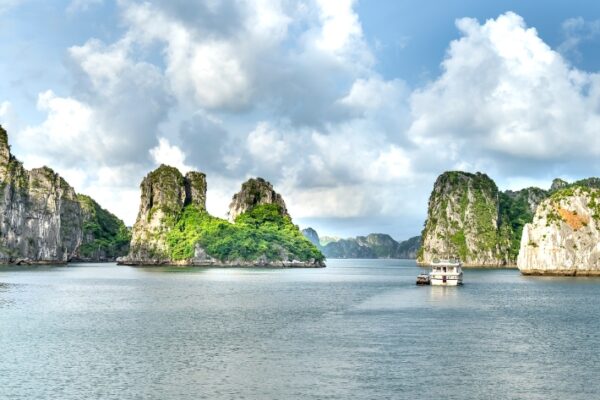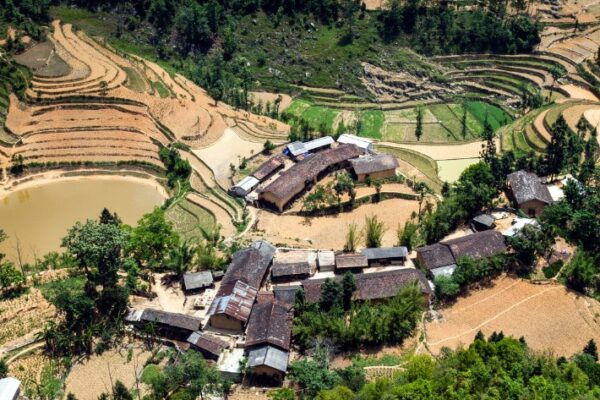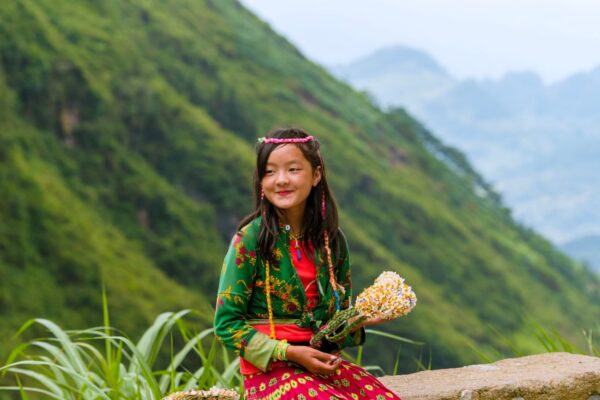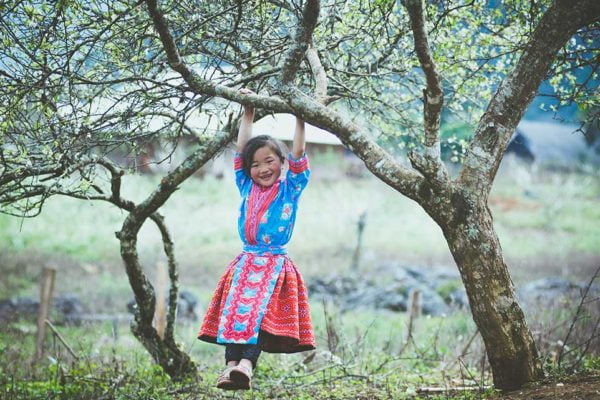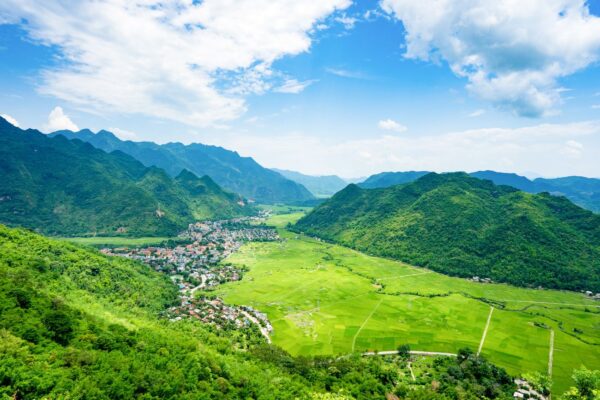How to Plan the Perfect Northern Vietnam Tour: Culture, Nature & Local Charm
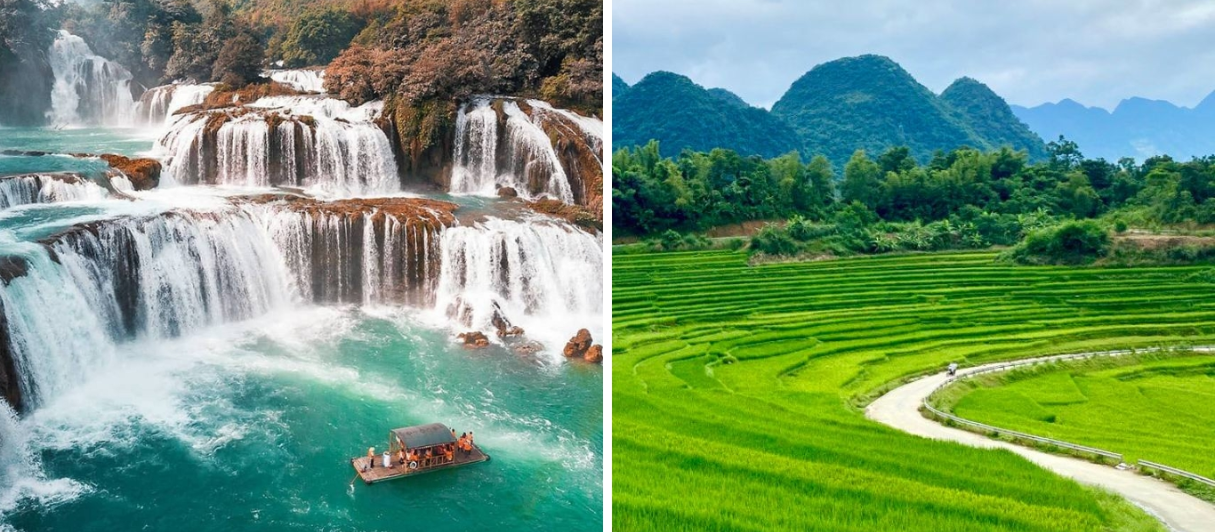
Planning a northern Vietnam tour opens the door to majestic landscapes, vibrant hill tribe cultures, and centuries-old heritage. Towering limestone mountains, emerald rice terraces, and peaceful villages come together to create a journey filled with contrast and charm. From Hanoi’s historic streets to Sapa’s misty highlands and Ninh Binh’s serene waterways, every stop offers a new perspective.
This guide reveals how to craft the perfect itinerary that balances iconic sights with authentic local encounters, cultural depth, and natural wonder across northern Vietnam.
Overview of Northern Vietnam
Northern Vietnam is a region of captivating contrasts, offering a harmonious blend of towering mountains, fertile river deltas, and timeless traditions. This part of the country is often divided into three key subregions, each with its own distinct character:
- Northwest: A mountainous area home to ethnic minority groups like the H’mong and Dao. Famous for Sapa, terraced rice fields, and highland trekking.
- Northeast: Known for dramatic karst landscapes, hidden waterfalls, and the UNESCO-listed Halong Bay. Adventure lovers flock to destinations like Ha Giang and Ban Gioc Waterfall.
- Red River Delta: The cultural and political heart, featuring Hanoi, Ninh Binh, and traditional villages. This area offers historical depth and vibrant urban life.
Culturally, Northern Vietnam is considered the cradle of Vietnamese civilization. It’s where the ancient dynasties rose, Confucian values took root, and many national traditions were born. From colorful hill tribe festivals to ancient temples and French colonial architecture, the region holds centuries of heritage. Exploring it means engaging deeply with Vietnam’s soul—through its landscapes, cuisine, and communities.
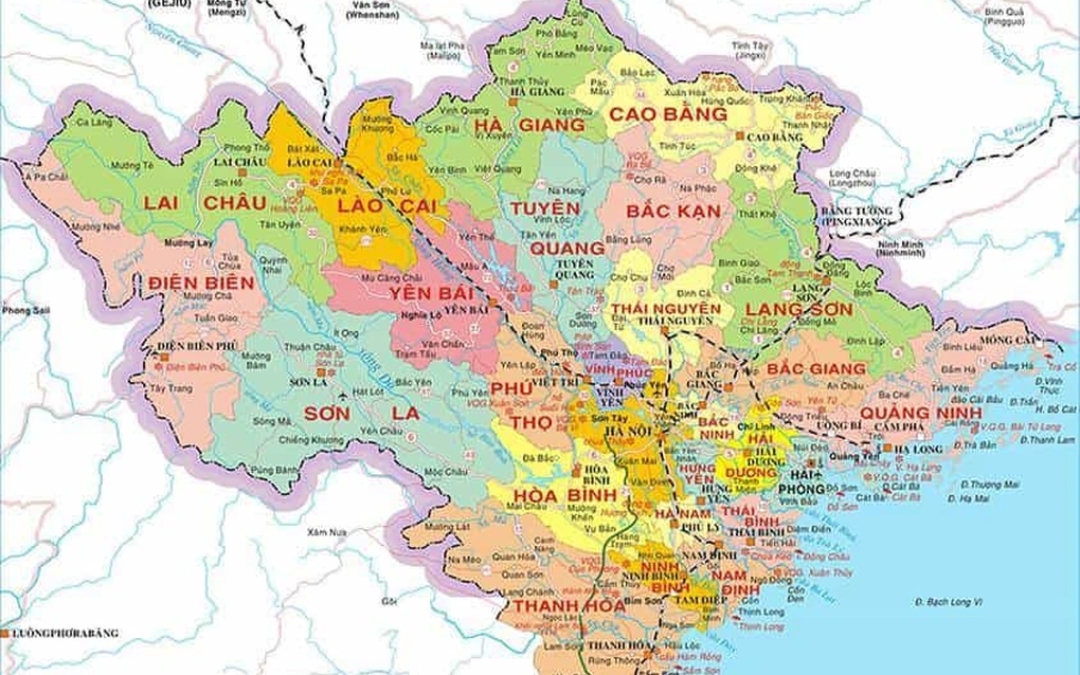
Explore Northern Vietnam with a detailed and easy-to-read travel map.
Best Time to Visit Northern Vietnam
Northern Vietnam features a diverse climate shaped by its geographical variety, from towering mountains to fertile river deltas. Understanding the regional weather patterns is essential for choosing the best time to explore this fascinating part of the country. Each season brings its own charm, offering something special for every type of traveler.
Climate Overview
The region experiences a tropical monsoon climate, with four distinct seasons—spring, summer, autumn, and winter. The weather varies not only by season but also by elevation and location.
- Spring (February–April) is known for its fresh greenery and floral blooms, but can be damp and foggy.
- Summer (May–July) is the hottest and most humid time of year, often reaching above 38°C.
- Autumn (August–October) brings cooler temperatures and clearer skies, making it the most pleasant season.
- Winter (November–January) can be chilly, especially in high-altitude areas, with misty mornings and cold winds sweeping down from the mountains.
In the Mountainous Areas
Northern Vietnam’s highland regions—spanning both the Northeast and Northwest—are known for their breathtaking scenery and cooler climate. The weather here is shaped by altitude and mountainous terrain, which creates stark contrasts even within short distances.
- General climate: While summer in the mountains can still be warm, it is much more bearable than in the lowlands due to the higher elevation. Winters, on the other hand, are cold and can bring frost or even snow in places like Sapa or Mau Son. Rainfall is heaviest from May to August, which may affect travel conditions in remote areas due to slippery roads or landslides.
- Best time to visit: The ideal months to visit the northern mountains are typically from September to November and March to May. Autumn offers golden rice terraces, clear skies, and crisp air—perfect for trekking and photography. Spring is a colorful time, with plum and peach blossoms transforming the valleys, accompanied by cultural festivals in ethnic minority villages.
- Travel tips: If you’re into festivals or cultural experiences, time your visit around Lunar New Year (Tet) or local ethnic celebrations in early spring. For landscape lovers, the harvest season in late autumn is unmatched in beauty.
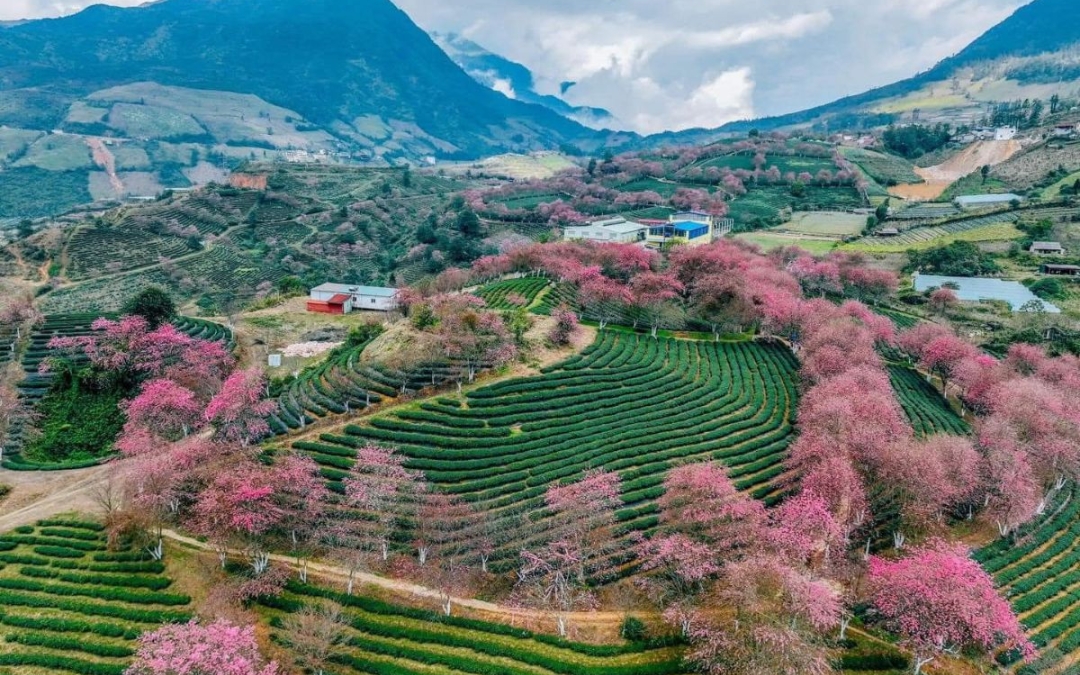
Spring in Sapa bursts with blooming flowers and fresh mountain air.
In the Red River Delta
This lowland region—including cities like Hanoi, Hai Phong, and Ninh Binh—has a subtropical climate with distinct wet and dry seasons.
- General climate: The Red River Delta has a humid climate, with the rainy season stretching from May to September. Winter (from October to April) is much drier but cooler, with overcast skies and occasional drizzles in early spring.
Best time to visit:
- Autumn (September–November) is the most popular time to explore Hanoi and nearby areas, with cooler air, gentle sunshine, and golden leaves lining the streets. It’s also a great time for street food lovers, as many local dishes are best enjoyed in cool weather.
- Spring (February–April) is ideal for visiting cultural sites and temples, especially during the Lunar New Year when the cities come alive with festivals and floral decorations.
- Late spring to early summer (April–June) is perfect for day trips to coastal cities like Hai Phong or natural attractions in Ninh Binh, before the intense heat sets in.
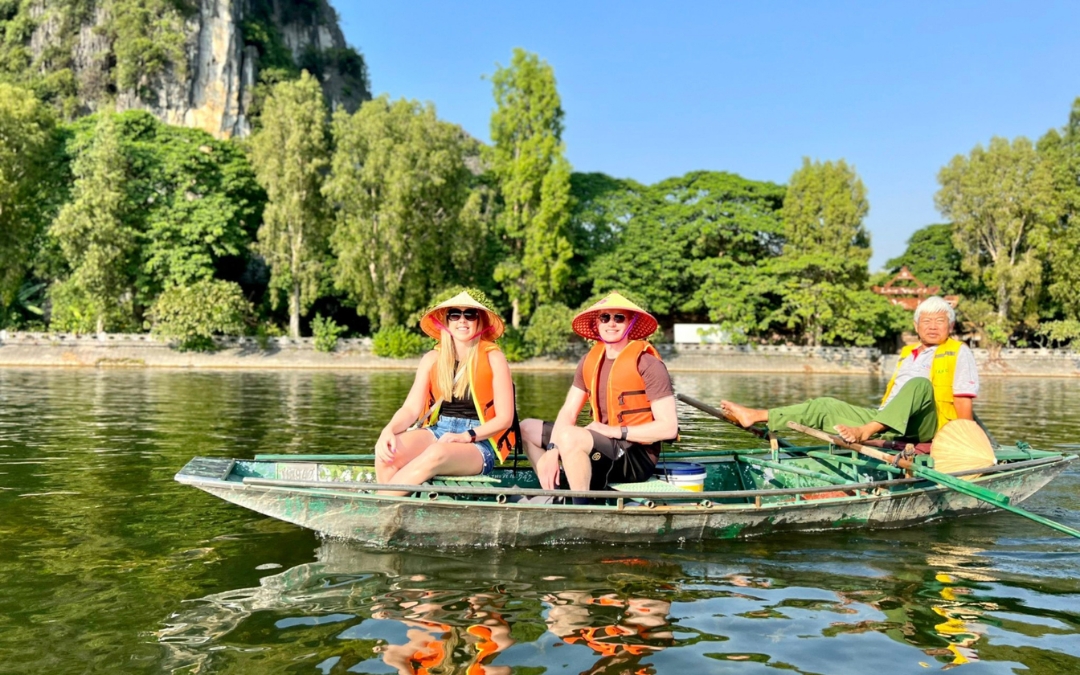
Summer in Ninh Binh is perfect for boat rides through lush limestone valleys.
Travel tips: During peak months, plan ahead for accommodations and consider early morning or late afternoon sightseeing to avoid midday heat. Also, lightweight, breathable clothing is recommended due to the high humidity.
Must-Included Destinations In A Northern Vietnam Tour
Northern Vietnam is a treasure trove of natural beauty, rich history, and cultural charm. From bustling cities to tranquil highlands and dramatic seascapes, each destination offers something unique for travelers. Here are the must-see highlights to include in your Northern Vietnam itinerary:
Hanoi: The Cultural Capital
Begin your journey in Hanoi, the heart of Northern Vietnam and a city where ancient traditions meet modern life.
- Old Quarter walking tours: Wander through the maze-like streets of the Hoan Kiem District, especially around Ta Hien Street and Dong Xuan Market, where each street reveals a different trade, craft, or history.
- Street food experiences: Dive into Hanoi’s vibrant street food scene in Ly Quoc Su Street, Hang Buom, or Tong Duy Tan with dishes like phở, bún chả, and egg coffee.
- French colonial architecture and museums: Admire the Hanoi Opera House, St. Joseph’s Cathedral, and explore the Vietnamese Women’s Museum or Hoa Lo Prison Museum for deeper historical insights.
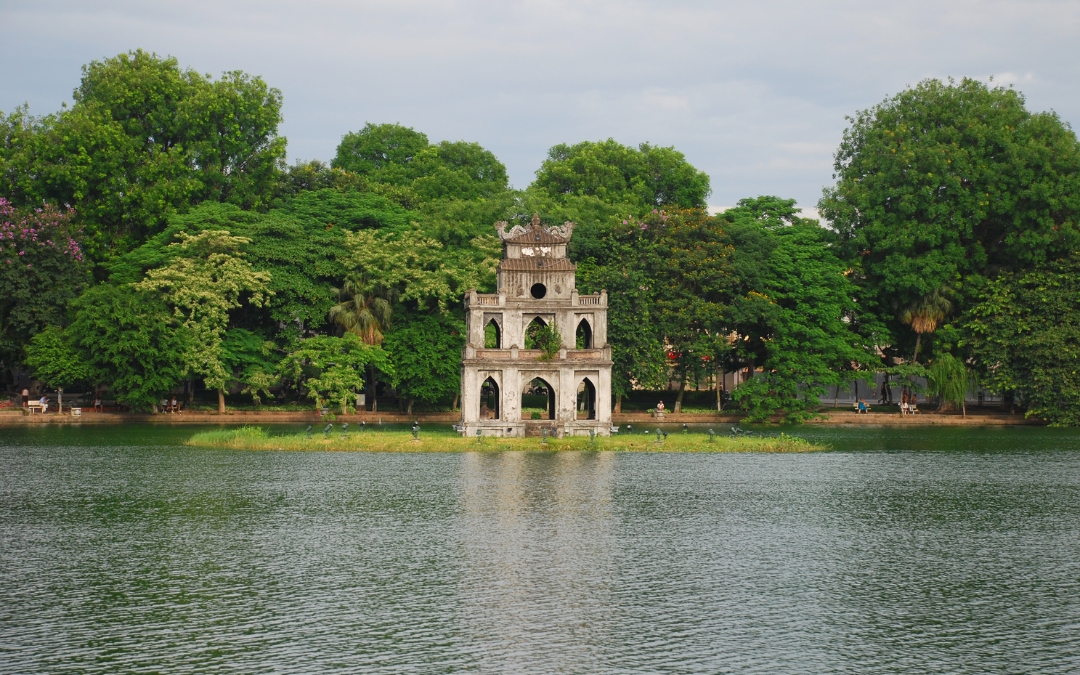
Hoan Kiem Lake is Hanoi’s peaceful heart and a symbol of local legend.
>> Read More: How To Make The Most Out Of One Week In Hanoi?
Halong Bay & Lan Ha Bay: Iconic Limestone Landscapes
Next, set sail into one of Vietnam’s most iconic natural wonders—Halong Bay, or its quieter cousin, Lan Ha Bay.
- Overnight cruises: Spend a night aboard a wooden junk boat cruise (e.g., Paradise Cruises or Indochina Sails) surrounded by dramatic limestone formations.
- Kayaking, caves, floating villages: Kayak around Luon Cave, explore the immense Sung Sot (Surprise) Cave, and visit traditional floating communities like Cua Van Fishing Village in Halong or Viet Hai Village in Lan Ha.
- Halong vs. Lan Ha: Halong Bay is world-famous and busier, while Lan Ha Bay, accessed from Cat Ba Island, offers the same stunning scenery with fewer crowds—ideal for those seeking a more tranquil experience.
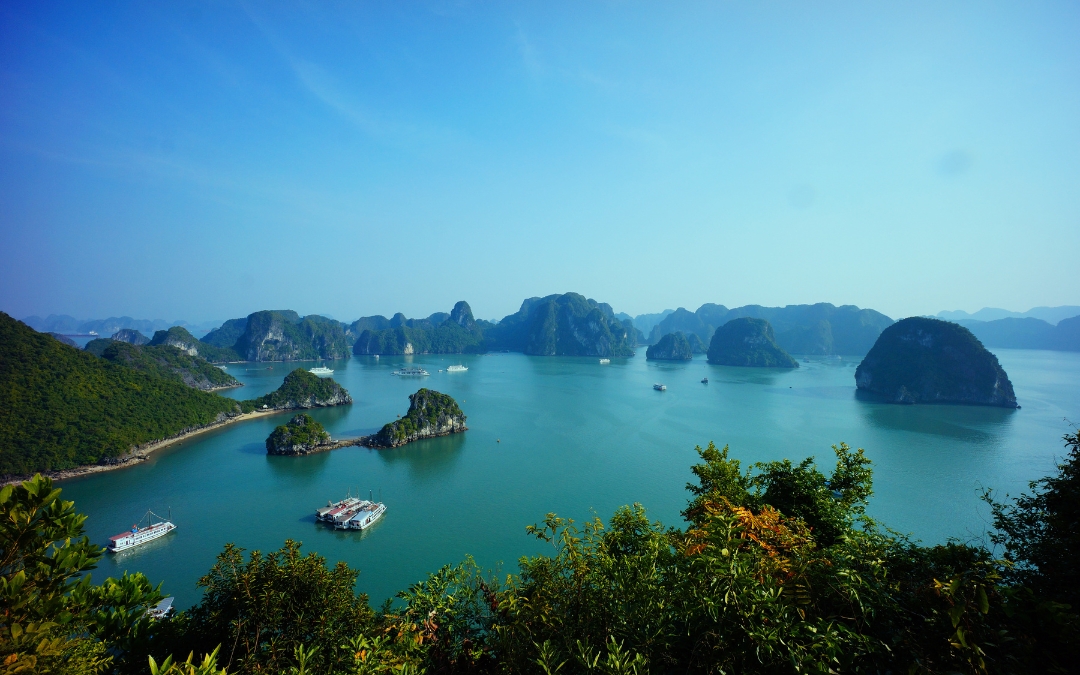
Emerald waters and majestic limestone islands.
Ninh Binh: Inland Halong Bay
Just a couple of hours from Hanoi, Ninh Binh enchants visitors with its surreal scenery and historical depth.
- Riverboat rides among rice paddies: Enjoy scenic sampan rides in Tam Coc or explore the more cinematic Trang An Landscape Complex, both winding through limestone valleys and lush fields.
- Visit Hoa Lu ancient capital, Bich Dong Pagoda: Step back in time at Hoa Lu, once the political center of Vietnam in the 10th century, and visit Bich Dong Pagoda, a serene complex built into a limestone cliff.
- Cycling through local villages: Pedal through peaceful routes around Van Lam Village or Thung Nham Bird Garden, surrounded by rice fields and karst scenery.
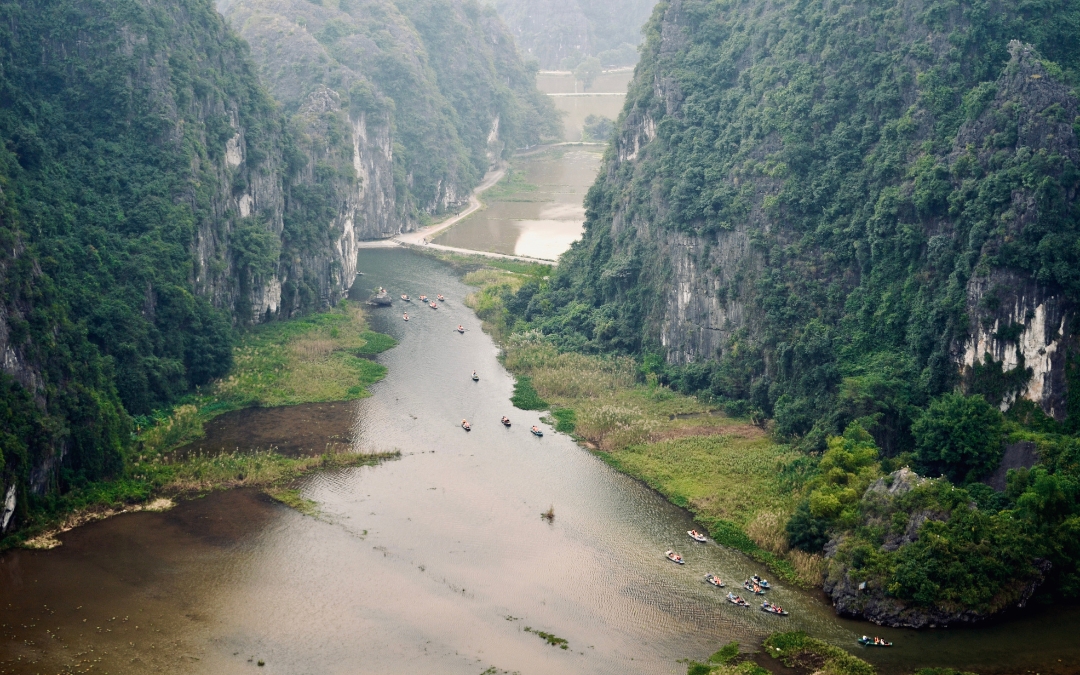
Ninh Binh offers karst landscapes, ancient temples, and quiet rural charm.
>> Read More: Ninh Binh Day Trip From Hanoi: Top 5 Excursions For A Wholesome Adventure
Sapa or Ha Giang: Highland Beauty and Cultural Encounters
For a taste of Vietnam’s rugged mountain landscapes and ethnic diversity, head north to either Sapa or Ha Giang.
- Terraced rice fields, mountain treks: Admire iconic terraces in Muong Hoa Valley (Sapa) or the spectacular views along the Ma Pi Leng Pass (Ha Giang), especially during harvest season.
- Ethnic minority villages (H’mong, Dao, Tay): In Sapa, visit villages like Cat Cat, Ta Van, or Lao Chai. In Ha Giang, explore Lung Cam, Dong Van, or Meo Vac, home to diverse ethnic communities.
- Homestay experiences: Stay in family-run homes in Ta Van (Sapa) or Du Gia Village (Ha Giang) for an authentic cultural exchange with home-cooked meals and local traditions.
- Sapa vs. Ha Giang: Sapa is more developed and easy to reach from Hanoi, making it a convenient choice for first-time visitors. In contrast, Ha Giang is remote and wild—perfect for adventure seekers who want to experience the epic Ha Giang Loop and the dramatic Ma Pi Leng Pass, away from the crowds.
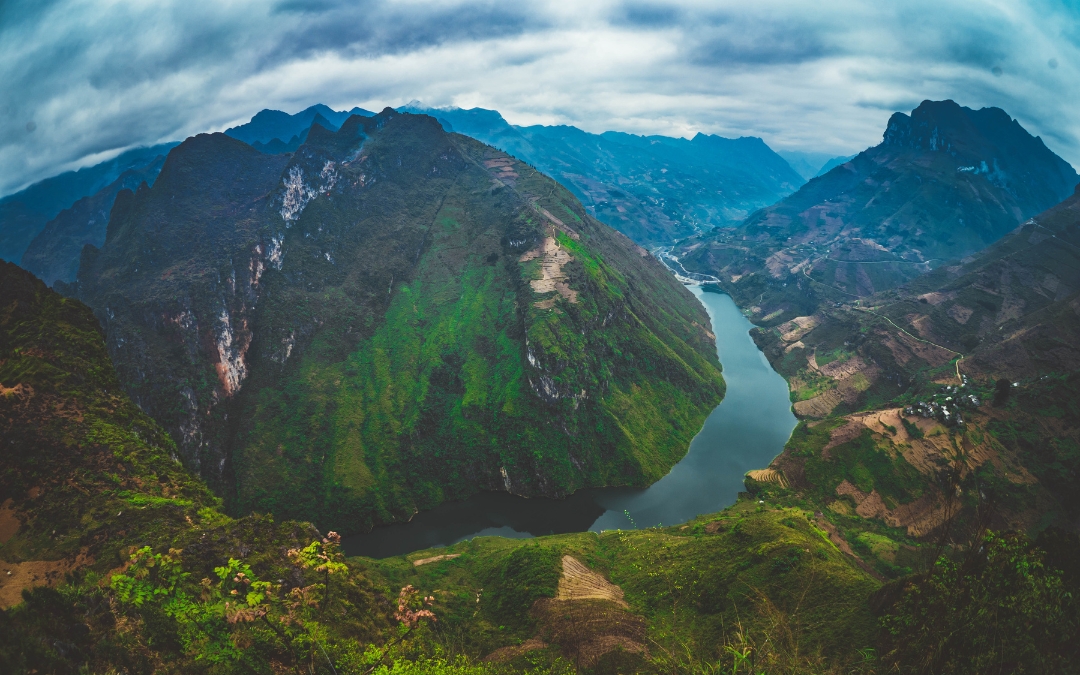
Nho Que River winds through Ha Giang’s deep green canyons and cliffs.
>> See Tour: Discover Ha Giang & The Far North
Cat Ba Island & National Park: Nature Lover’s Retreat
If you’re looking for a quieter alternative to Halong Bay, Cat Ba Island offers an excellent mix of adventure and relaxation.
- Alternative to Halong Bay: Located near Lan Ha Bay, Cat Ba Island is a gateway to stunning karst scenery and tranquil waters.
- Hiking, kayaking, eco-tourism: Trek through the dense jungles of Cat Ba National Park, kayak around Lan Ha Bay, or spot endangered Cat Ba langurs on the island’s eastern cliffs. Explore Hospital Cave or relax at Cat Co beaches.
- Sustainable travel: With a focus on eco-tourism, Cat Ba is ideal for travelers who want to explore responsibly and support local conservation efforts.
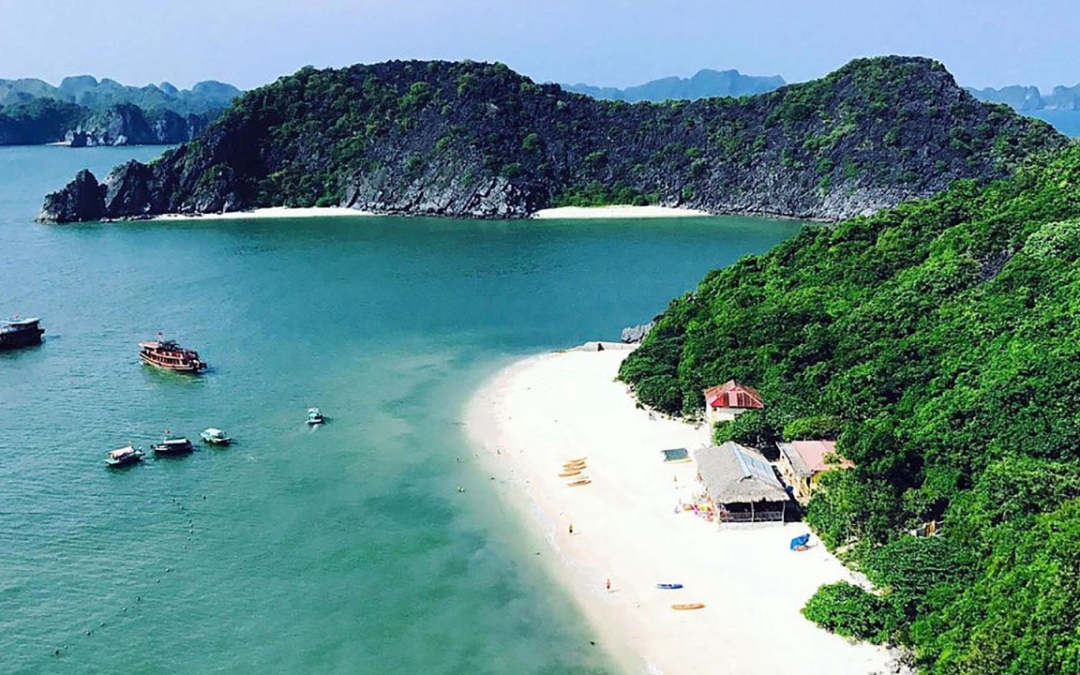
Cat Ba Island combines jungle hikes with serene beaches and fishing villages.
Local Charm: Cultural & Culinary Experiences
Northern Vietnam is not only a destination of breathtaking landscapes, but also a cradle of culture, tradition, and culinary artistry. For travelers seeking authentic connections, these immersive experiences will bring you closer to the heart and soul of the North.
Traditional Water Puppet Shows – The Spirit of Northern Folklore
Múa rối nước (water puppetry) is a living testament to the creativity of Vietnamese farmers, originating from the Red River Delta’s flooded rice paddies. The stage is a pool of water, puppeteers stand hidden behind a screen, skillfully controlling lacquered wooden puppets with long rods beneath the surface.
Each show, such as those at Thăng Long Water Puppet Theatre in Hanoi or local performances in rural villages, features vibrant scenes of village life—harvesting rice, catching fish, dragon dances, and even historical legends.
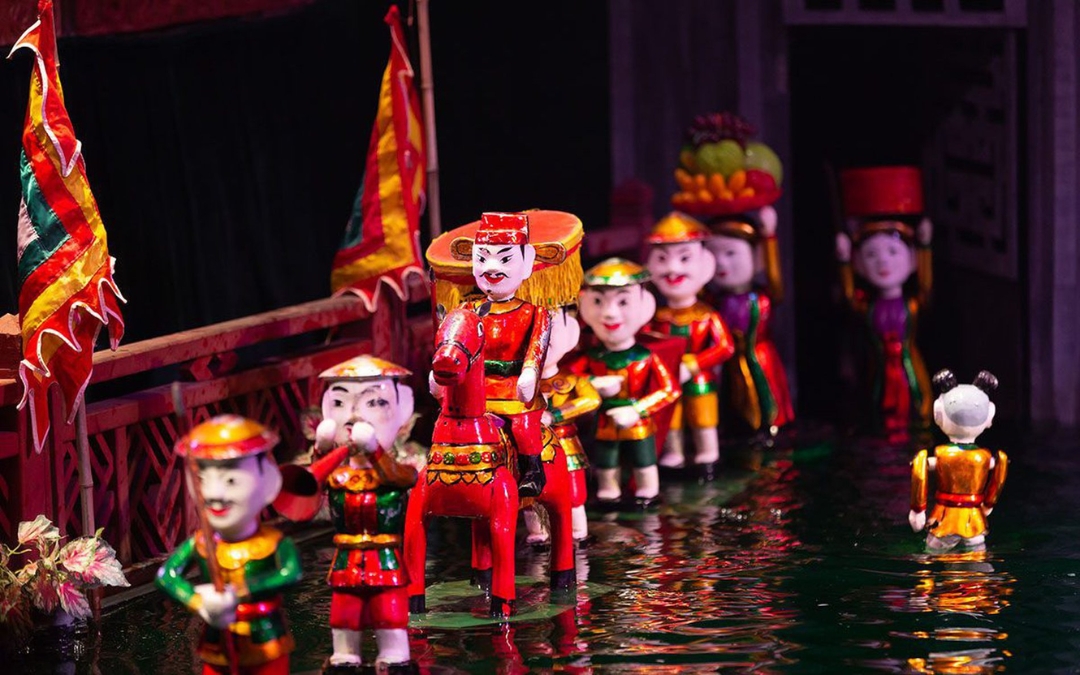
Water puppet shows in Hanoi bring ancient folklore to life on water stages.
Deeper experience:
- Before the show, take time to read about the origins and meaning behind múa rối nước.
- Watch how musicians perform live using traditional instruments like the đàn bầu, đàn nguyệt, and trống.
- If possible, visit puppet-making workshops in Đông Các or Rạch Village near Hanoi, where you can see artisans carving and painting each puppet by hand.
Vietnamese Tea Culture – An Art of Patience and Hospitality
Drinking tea (uống trà) is not merely a refreshment but an age-old ritual reflecting northern etiquette and mindfulness. In Hanoi, elderly men gather at sidewalk tea stalls, sipping trà mạn (strong green tea) while exchanging stories or playing chess. In the countryside, such as Thái Nguyên or Tân Cương, the tradition is even more pronounced—families welcome guests with fragrant trà xanh, often served in hand-thrown pottery teapots.
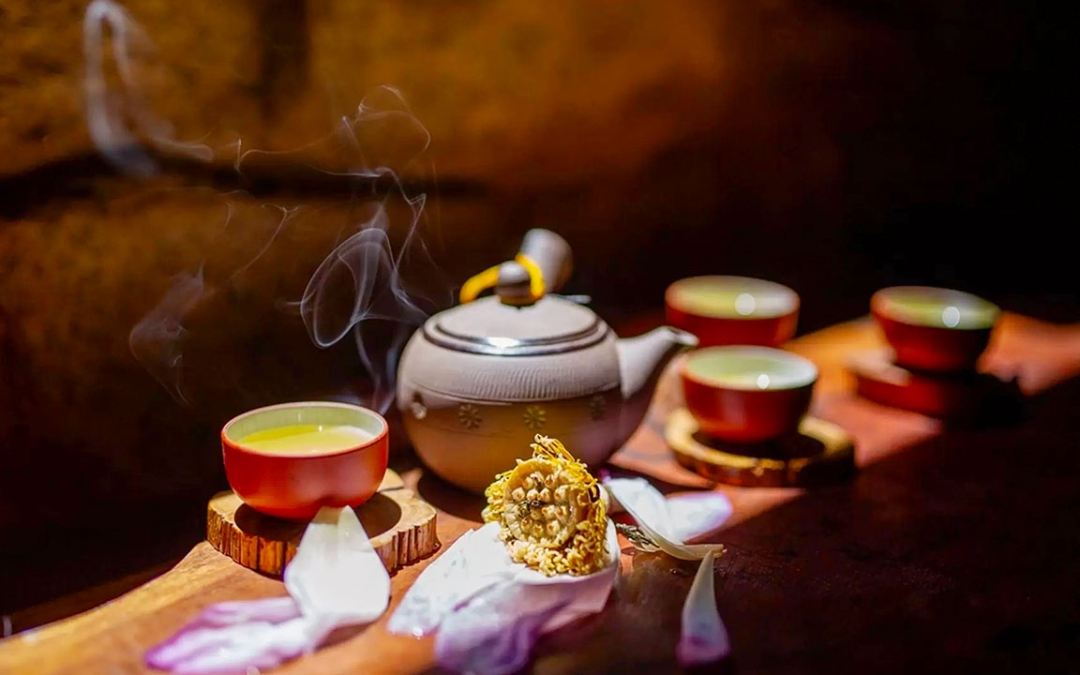
Vietnamese tea culture reflects hospitality, mindfulness, and tradition.
Deeper experience:
- Join a local tea tasting session at Trà Quán in Hanoi’s Old Quarter, where you’ll learn how to “wake” the tea leaves and appreciate subtle flavors.
- Visit Thái Nguyên to stroll through undulating tea hills, pick young tea buds with farmers, and experience the full journey from plant to cup.
- Pair tea with traditional snacks like cốm làng Vòng (young green rice from Vòng village) or bánh đậu xanh (mung bean cake from Hải Dương), learning the cultural meanings behind these pairings.
Northern Street Food – Where Everyday Life Meets Culinary Heritage
The food stalls and humble eateries of Northern Vietnam are where true local flavor comes alive. Each dish is a window into history and local identity, made from ingredients rooted in the Red River Delta and surrounding highlands.
Must-Try dishes:
- Bún chả: Savour smoky grilled pork patties served in a bowl of lightly sweetened fish sauce with pickled papaya, fresh herbs, and delicate rice noodles. Eat it the local way—dipping noodles and herbs into the sauce with each bite. Best tried at Bún Chả Hương Liên or tucked-away alleys of the Old Quarter.
- Phở: Wake up early to join Hanoians for a bowl of phở—clear beef broth, flat rice noodles, thinly sliced beef or chicken, and a dash of vinegar and chili. Experience the bustle of Phở Bát Đàn or Phở Thìn at dawn, as the city comes alive.
- Cà phê trứng: Enjoy a cup of cà phê trứng—strong, dark coffee topped with a creamy, sweet layer of whipped egg yolk. Sit in the nostalgic ambiance of Café Giảng or Café Đinh, and learn how this drink was born during the milk shortages of the 1940s.
- Bánh cuốn: Watch as thin sheets of steamed rice batter are deftly rolled around minced pork and wood ear mushrooms, sprinkled with crispy shallots and served with dipping sauce. Visit family-run stalls in Thanh Trì (Hanoi’s bánh cuốn capital) for the most authentic taste.
- Xôi xéo: Experience the simplicity of xôi xéo—fragrant sticky rice with mashed mung beans and fried shallots, often sold from shoulder poles by street vendors at dawn, a nostalgic breakfast for Hanoians.
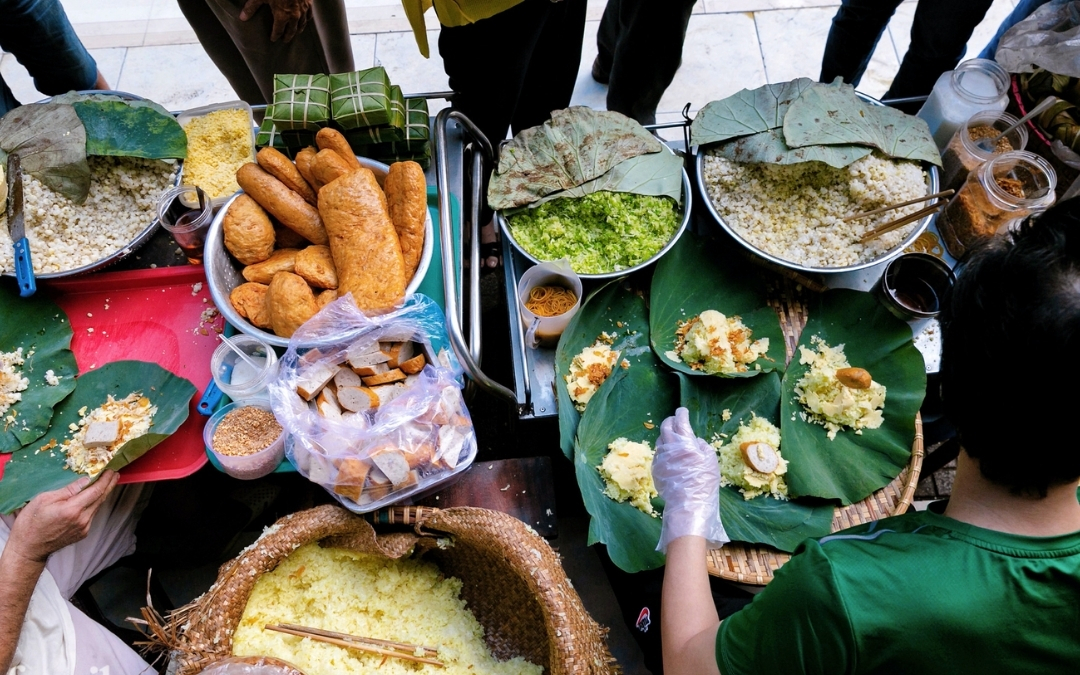
Xôi xéo is a savory sticky rice dish topped with mung bean and fried shallots.
Deeper experience:
- Join a street food tour led by locals, who’ll share stories behind each dish and introduce hidden gems known only to residents.
- Observe the etiquette—how locals mix sauces, which herbs are paired with which dish, and the rhythm of meals as a social gathering.
>> Read more: Best Recommendations For An Authentic Food Tour In Hanoi
Markets & Night Bazaars – The Beating Heart of Local Life
Northern Vietnam’s markets are more than places to shop—they are vibrant centers of commerce, culture, and social exchange.
- Chợ Đồng Xuân (Hanoi): This is the city’s oldest and largest market, where you can buy everything from fabric and dried fruit to household goods. Watch as vendors shout prices, sample ô mai (dried candied fruits), or buy hand-embroidered linens.
- Chợ đêm Phố Cổ (Hanoi’s Old Quarter Night Market): Every weekend, the streets come alive with food stalls, handicrafts, clothes, and impromptu street performances. Try street snacks like nem chua rán (fried fermented pork), browse souvenirs, and people-watch.
- Chợ Bắc Hà (Lào Cai): In the misty highlands near Sapa, the Sunday market is a dazzling tapestry of color as H’mong, Dao, Tày, and Phù Lá people gather. Witness the sale of livestock, handwoven textiles, and unique local foods like thắng cố (mountain horse stew) and homemade rượu ngô (corn wine).
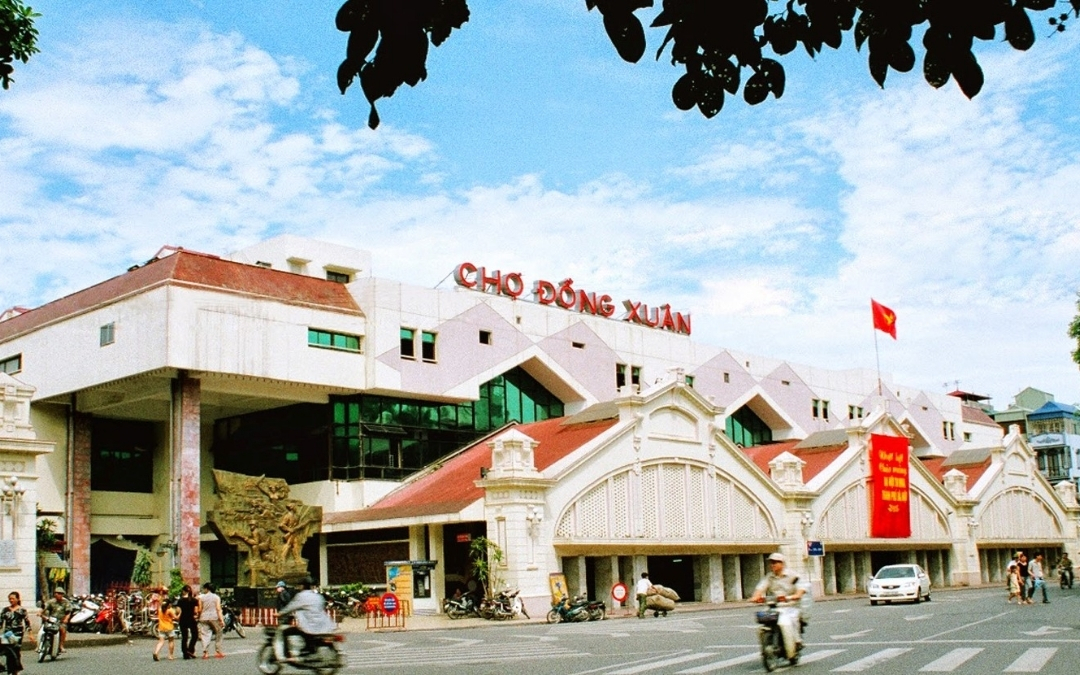
Chợ Đồng Xuân is Hanoi’s largest market, rich in goods and local color.
Deeper experience:
- Go early to see the lively morning rituals as vendors set up.
- At Bac Ha, take time to talk with local ethnic minorities (with the help of a guide), observe traditional costumes, and learn about their barter system.
- Don’t be shy to try local specialties in situ—the flavors are often best at the source!
Handicraft Villages – Where Tradition Lives On
Northern Vietnam’s craft villages are centuries-old repositories of skill and creativity, where artisans keep ancestral techniques alive:
- Làng gốm Bát Tràng: Just 13km from Hanoi, this ceramic village is famed for its delicate blue-and-white pottery. Join a pottery-making class, shape your own cup or bowl, and visit the market to find everything from traditional vases to modern tableware.
- Làng lụa Vạn Phúc (Hà Đông): Discover the intricate process of weaving shimmering silk, try hand-loom weaving, and pick up elegant scarves and áo dài at source.
- Làng tranh Đông Hồ (Bắc Ninh): This village is renowned for woodblock prints depicting folk stories and social satire. Meet the last remaining artisans, see how they use natural dyes from leaves and clay, and pick up meaningful artwork with themes of luck, prosperity, and family.
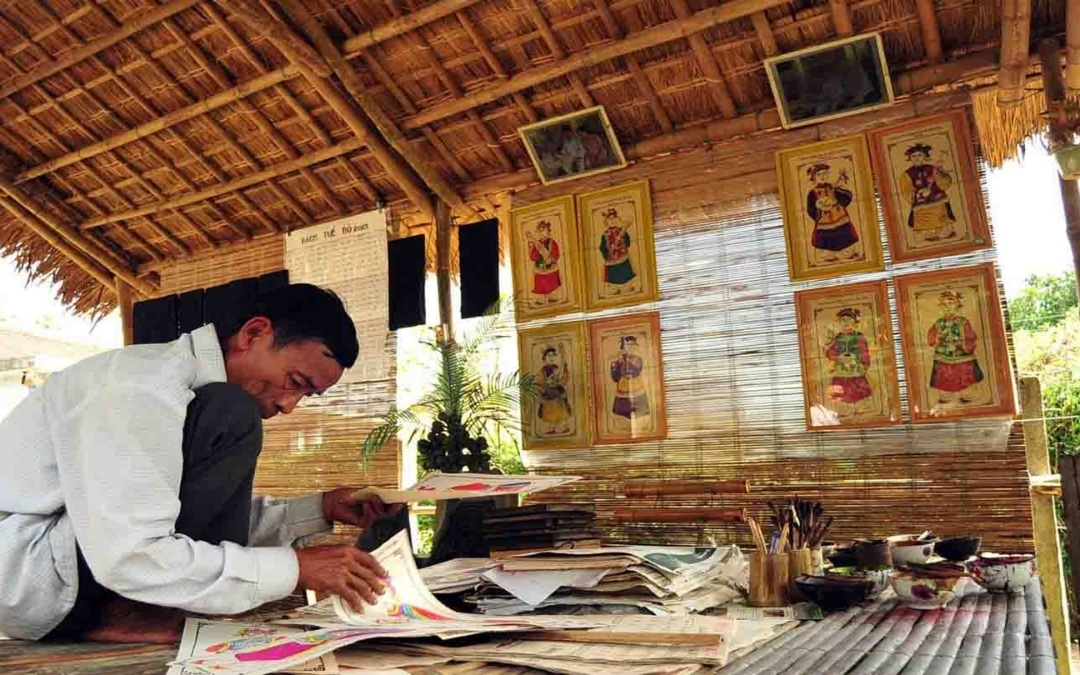
Đông Hồ village preserves Vietnam’s traditional woodblock painting art.
Deeper experience:
- Arrange for a hands-on workshop with local artisans, not just as a souvenir but as a memory and cultural connection.
- Ask about the symbolism in patterns—each motif in pottery, silk, or painting carries meaning passed down through generations.
Other Deep Cultural Experiences
- Calligraphy and “Ông Đồ”: During Tết, the sight of old scholars (ông đồ) writing calligraphy at Văn Miếu – Quốc Tử Giám (Temple of Literature) is both poetic and symbolic. Receiving a calligraphy scroll is believed to bring good fortune, wisdom, or success in exams.
- Traditional music: Seek out an intimate ca trù (chamber singing) performance at venues like Ca trù Thái Hà in Hanoi, or attend the quan họ folk singing at festivals in Bắc Ninh. Listen to the haunting beauty of voices, wooden clappers, and delicate melodies—each song a link to centuries past.
- Village festivals: Northern villages are home to myriad festivals. The Lim Festival in Bắc Ninh bursts with music, traditional games, and rituals. The Perfume Pagoda Festival is a spiritual journey by boat and on foot, a time when the countryside is alive with pilgrims, incense, and temple fairs.
Suggestions for a Perfect Northern Vietnam Itinerary
Northern Vietnam is full of natural wonders, cultural treasures, and memorable adventures. Here are three sample itineraries, tailored for different trip lengths, to help you make the most of your journey.
3 Days: Hanoi – Ninh Binh – Halong Bay
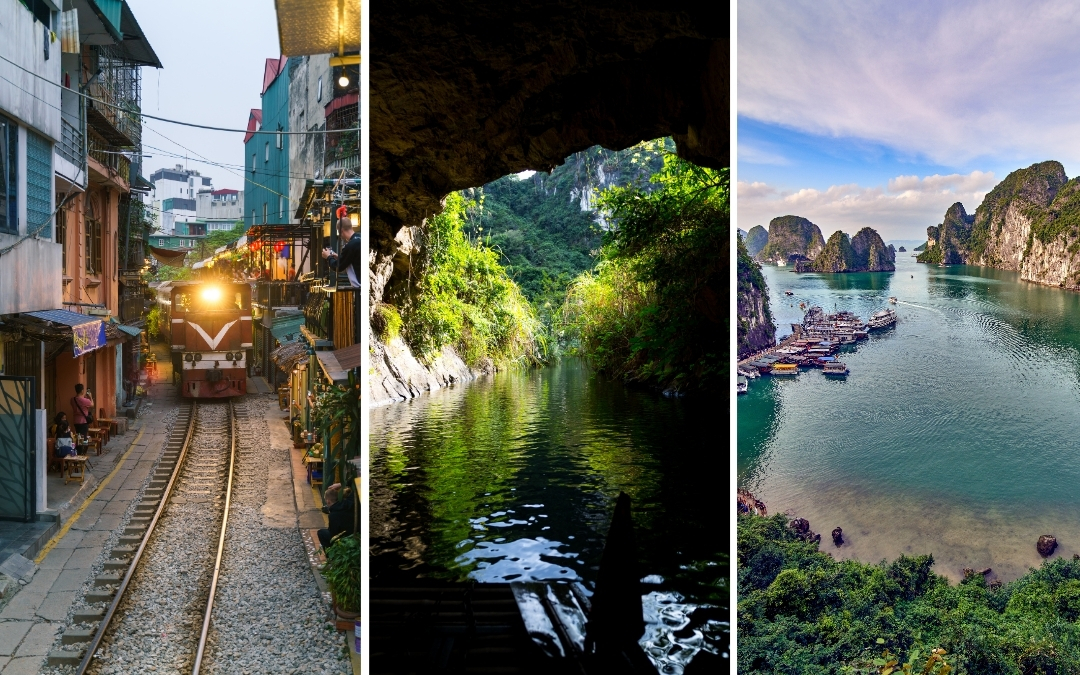
A 3-day journey blends history, nature, and seascapes in Northern Vietnam.
Day 1: Hanoi
- Arrive in Hanoi and check into your hotel. Spend the morning exploring the bustling Old Quarter. Stroll through the narrow streets, visit Hoan Kiem Lake, and try famous local dishes like phở and bún chả.
- In the afternoon, discover key sights such as the Temple of Literature and the French Quarter. Enjoy a traditional water puppet show in the evening.
Day 2: Ninh Binh Day Trip
- Depart early for Ninh Binh (about 2 hours from Hanoi). Take a sampan boat ride through the dramatic limestone karsts of Tam Coc or Trang An.
- Visit the ancient capital of Hoa Lu and Bich Dong Pagoda. Enjoy a bicycle ride through the rice paddies and peaceful rural villages. Return to Hanoi in the evening.
Day 3: Halong Bay
- Head to Halong Bay in the morning (approx. 2.5 hours by car). Board a cruise and glide among thousands of limestone islands. Visit Sung Sot Cave or Titop Island, and perhaps kayak or swim in the bay.
- Enjoy a seafood lunch on board before returning to Hanoi or staying overnight on the boat (if time allows).
>> See tour: Best of Hanoi and Halong Bay in 5 Days
7 Days: Hanoi – Ninh Binh – Halong Bay – Sapa
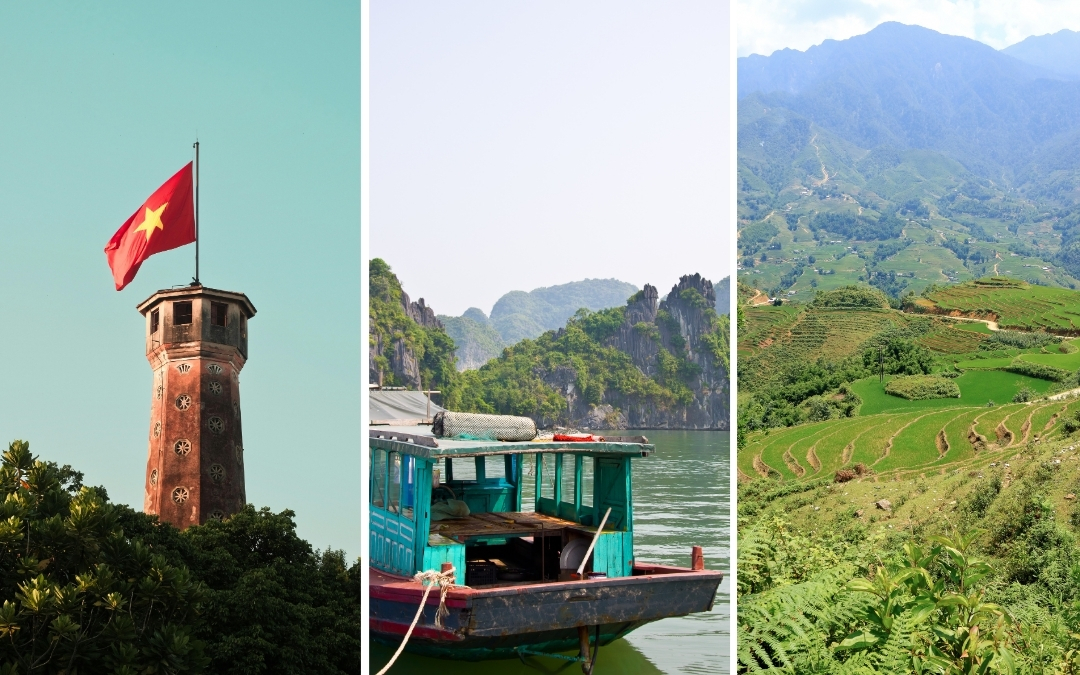
Spend 7 days exploring city life, karsts, the sea, and Sapa’s highlands.
Day 1–2: Hanoi
- Arrive and immerse yourself in Hanoi’s culture—explore the Old Quarter, Hoan Kiem Lake, museums, and local markets.
- Sample street food and enjoy the city’s evening buzz with a night market visit or a traditional performance.
Day 3: Ninh Binh
- Travel to Ninh Binh for a boat trip in Tam Coc or Trang An. Visit Hoa Lu ancient capital and cycle through Van Lam or nearby villages.
- Option to stay overnight in Ninh Binh for a countryside experience.
Day 4–5: Halong Bay
- Transfer to Halong Bay for a memorable overnight cruise.
- Discover beautiful caves, floating villages, and enjoy kayaking, swimming, or a sunset on the deck. Return to Hanoi on Day 5.
Day 6–7: Sapa
- Take an overnight train or express bus to Sapa.cSpend two days trekking through scenic rice terraces in Muong Hoa Valley, visit local ethnic villages (such as Lao Chai, Ta Van, or Cat Cat), and enjoy a homestay for authentic cultural immersion.
- Return to Hanoi by night train or bus.
>> See tour: Hanoi – Sapa – Ninh Binh – Halong Bay Tour
10+ Days: Hanoi – Ha Giang Loop – Ninh Binh – Lan Ha Bay
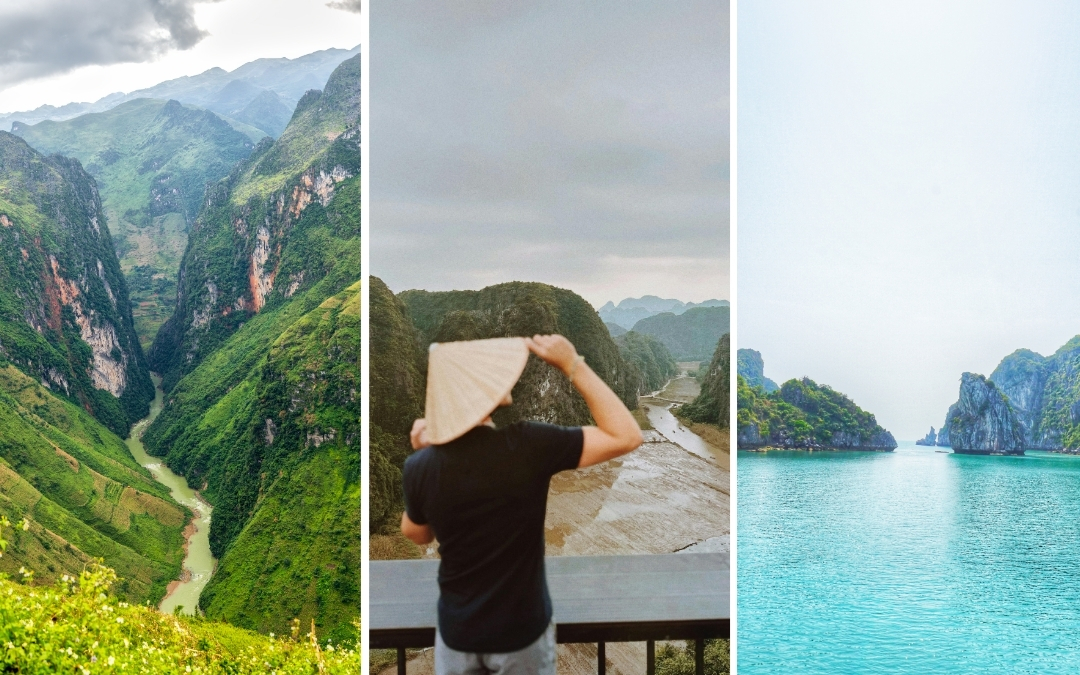
This 10-day route takes you from mountains to coast through Vietnam’s best.
Day 1–2: Hanoi
- Arrive and relax, then discover Hanoi’s highlights: Old Quarter, Hoan Kiem Lake, the Temple of Literature, and the city’s diverse food scene.
- Optional: Take a day trip to Bat Trang ceramics village or Van Phuc silk village.
Day 3–6: Ha Giang Loop
- Travel north to Ha Giang and start the legendary Ha Giang Loop by motorbike or car.
- Spend 3–4 days exploring the breathtaking landscapes of Dong Van Karst Plateau, Ma Pi Leng Pass, and Quan Ba Heaven’s Gate.
- Visit ethnic minority markets, stay overnight in homestays in villages like Dong Van or Meo Vac, and experience the raw beauty and culture of this remote region.
Day 7: Hanoi (or Ninh Binh)
- Return to Hanoi to rest, or travel straight to Ninh Binh if preferred.
Day 8: Ninh Binh
- Enjoy a peaceful day in Ninh Binh: boat ride in Trang An or Tam Coc, climb up to Mua Cave for panoramic views, and bike through the countryside.
Day 9–10: Lan Ha Bay / Cat Ba Island
- Head to Cat Ba Island and board a cruise on Lan Ha Bay—Halong’s quieter neighbor, famed for its emerald waters and dramatic limestone islets.
- Explore by kayak, visit secluded beaches and floating fishing villages (such as Cai Beo), and hike in Cat Ba National Park. Overnight on the island or on a cruise.
Day 11+: Return to Hanoi
- Spend your last day(s) shopping for souvenirs, revisiting favorite spots, or enjoying more local cuisine before departure.
Your Northern Vietnam Adventure Awaits
A northern Vietnam tour is much more than a journey—it’s an invitation to immerse yourself in centuries-old culture, breathtaking landscapes, and flavors that linger long after the trip ends. From Hanoi’s lively streets to the tranquil beauty of Halong Bay, the golden terraces of Sapa or Ha Giang, and the timeless charm of Ninh Binh, every moment in Northern Vietnam promises a new discovery.
Ready to make these memories your own? Build your trip with Asia Pioneer Travel—our travel experts are here to turn your dreams into reality. Just tell us your wish, and we’ll craft a customized itinerary that fits your style, interests, and pace. Your unforgettable Northern Vietnam adventure starts here!
